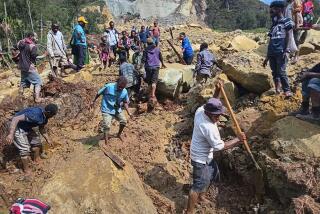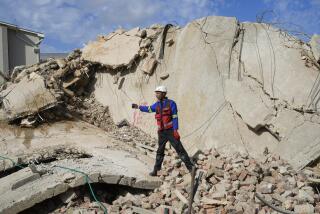Dozens missing as buildings collapse in southern China landslide
- Share via
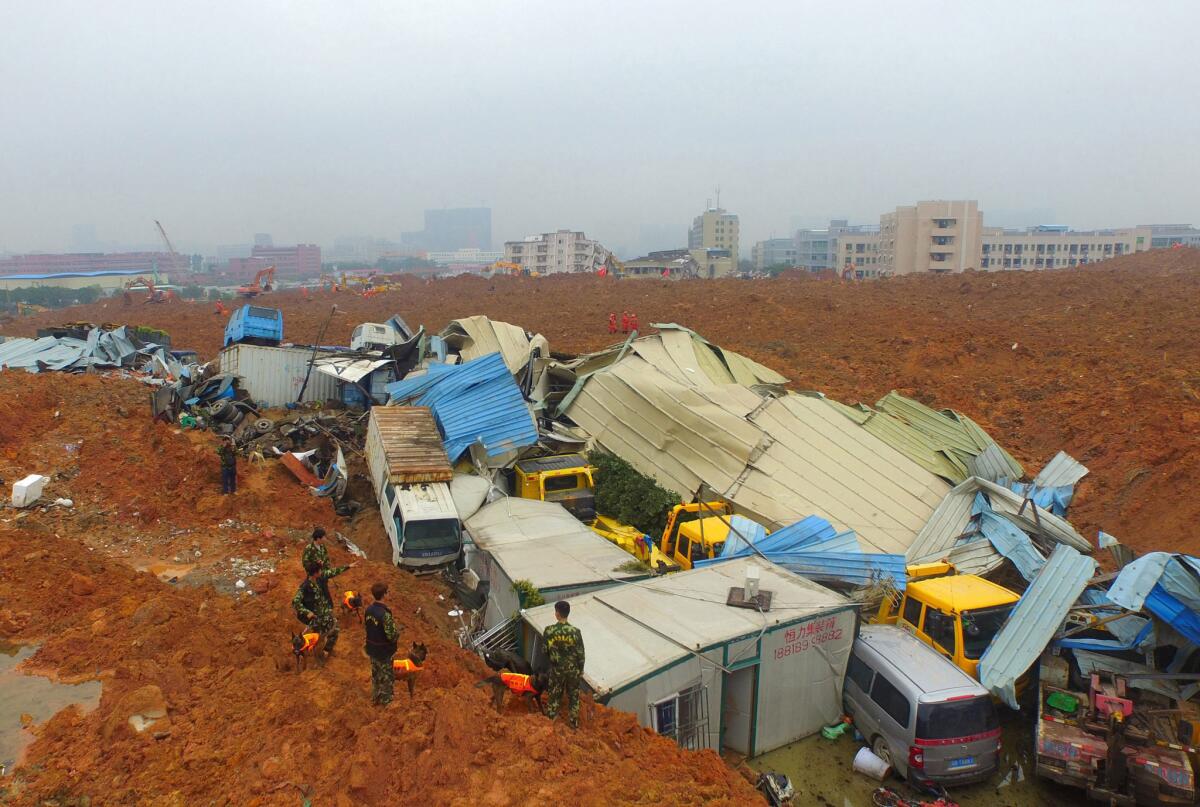
Chinese rescuers work at the site of a landslide that hit an industrial park in Shenzhen in south China’s Guangdong province.
reporting from BEIJING — A massive landslide buried an industrial park in the southern Chinese city of Shenzhen on Sunday morning, according to Chinese state media reports and online posts.
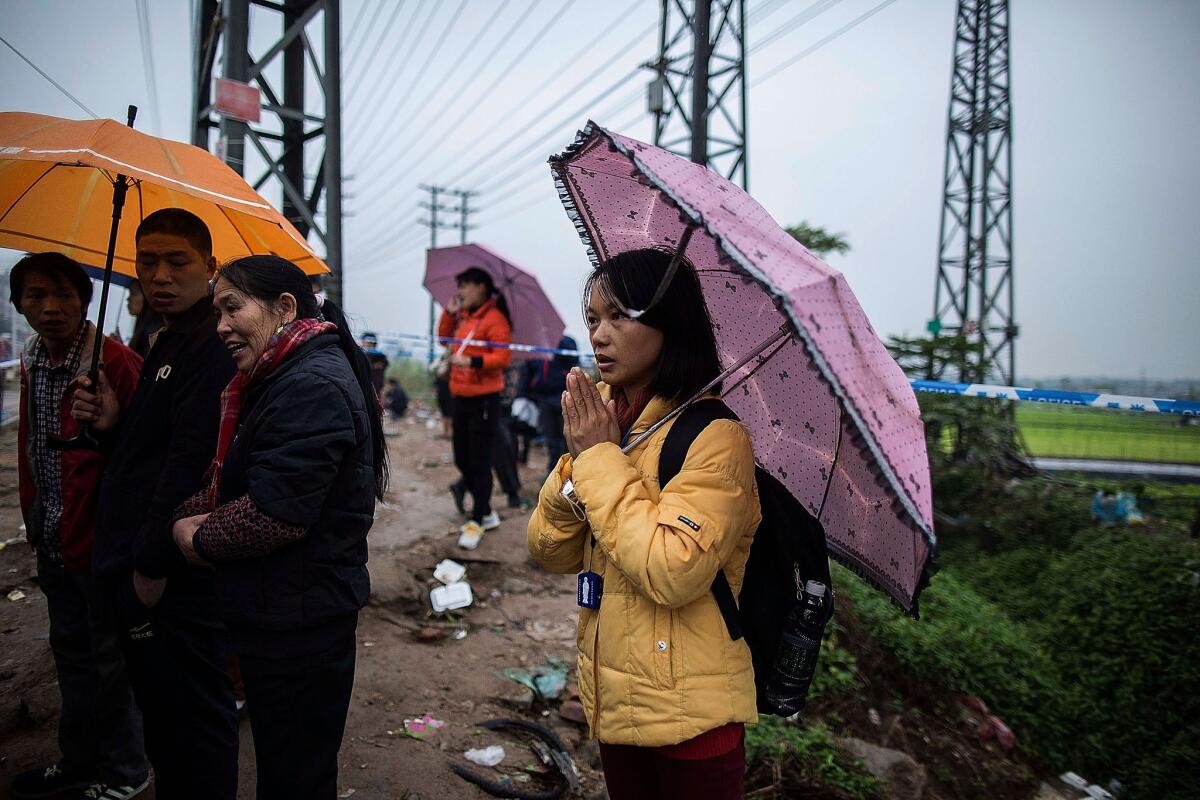
A woman prays near a collapsed building after a landslide destroyed or damaged dozens of buildings in Shenzhen, China.
At least 59 people were missing, and rescuers pulled four people alive from collapsed or buried buildings, the official New China News Agency reported late Sunday. About 1,500 rescue workers were dispatched to the scene.

Rescue workers look for survivors after a landslide hit an industrial park in Shenzhen in south China’s Guangdong province.
The landslide covered an area of nearly 650,000 square feet in Shenzhen’s Guangming New District, including the Liuxi Industrial Park, according to a televised statement by Shenzhen municipal official Li Yikang. At least 900 people were evacuated, he said.
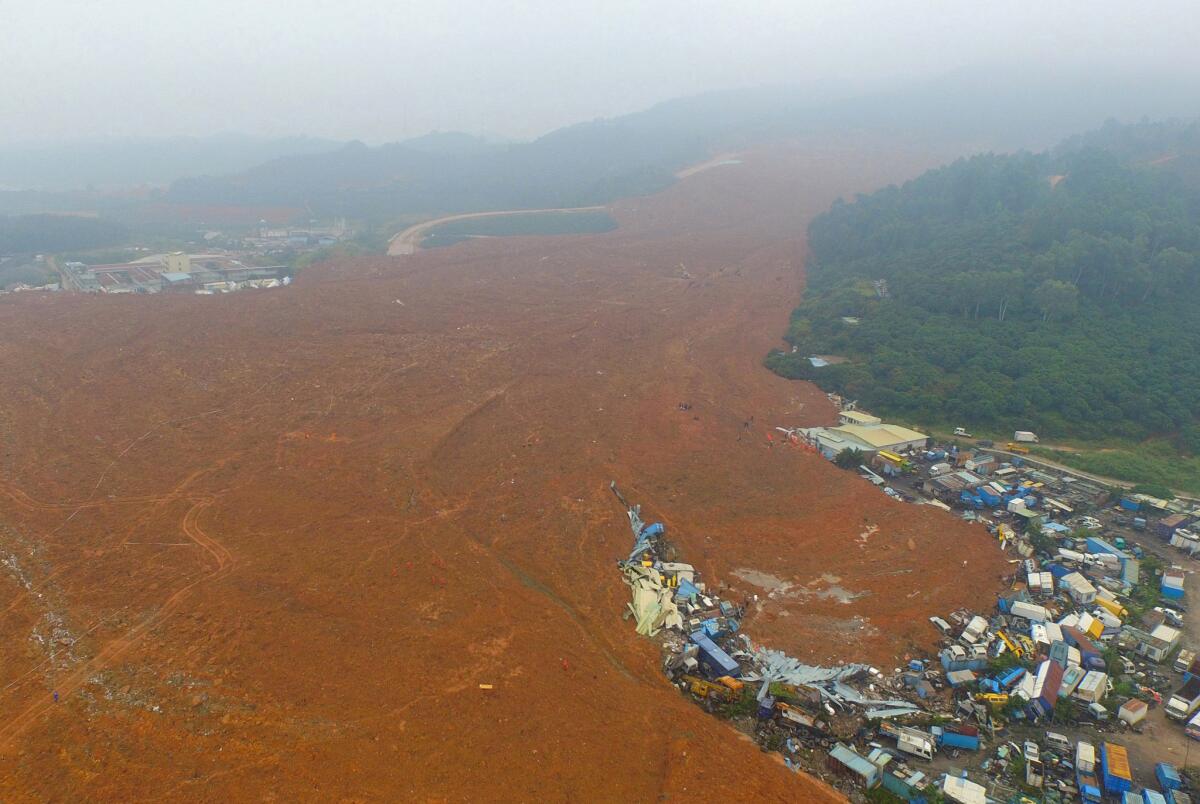
In this aerial photograph, the site of a landslide that hit an industrial park in Shenzhen in south China’s Guangdong province can be seen.
After the landslide, Chinese President Xi Jinping issued an “important directive” demanding that provincial and municipal authorities “rapidly organize” emergency response measures and “do their utmost to ensure that casualties are minimized.”
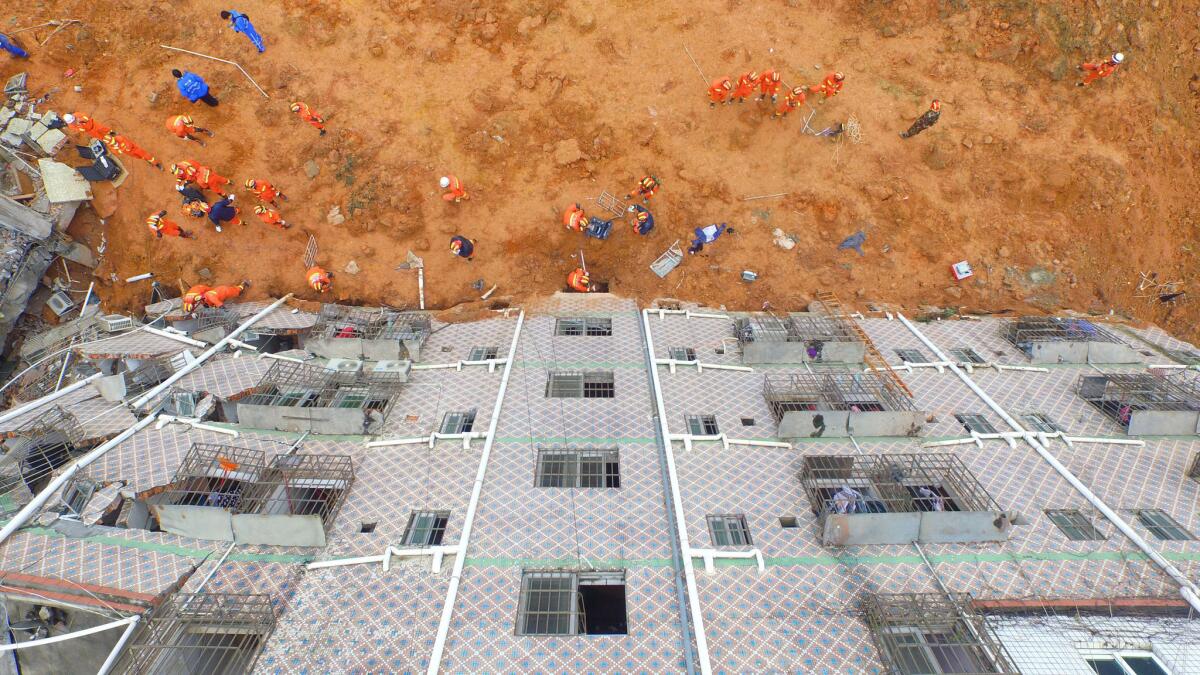
In this aerial photograph, Chinese rescuers can be seen working at the site of a landslide that hit an industrial park in Shenzhen in south China’s Guangdong province.
Join the conversation on Facebook >>
“The site is quite narrow and is located on a ramp, so it is very difficult for vehicles to enter,” the New China News Agency quoted Ao Zhuoqia, a Shenzhen fire department employee, as saying. “We have to go there on foot.”
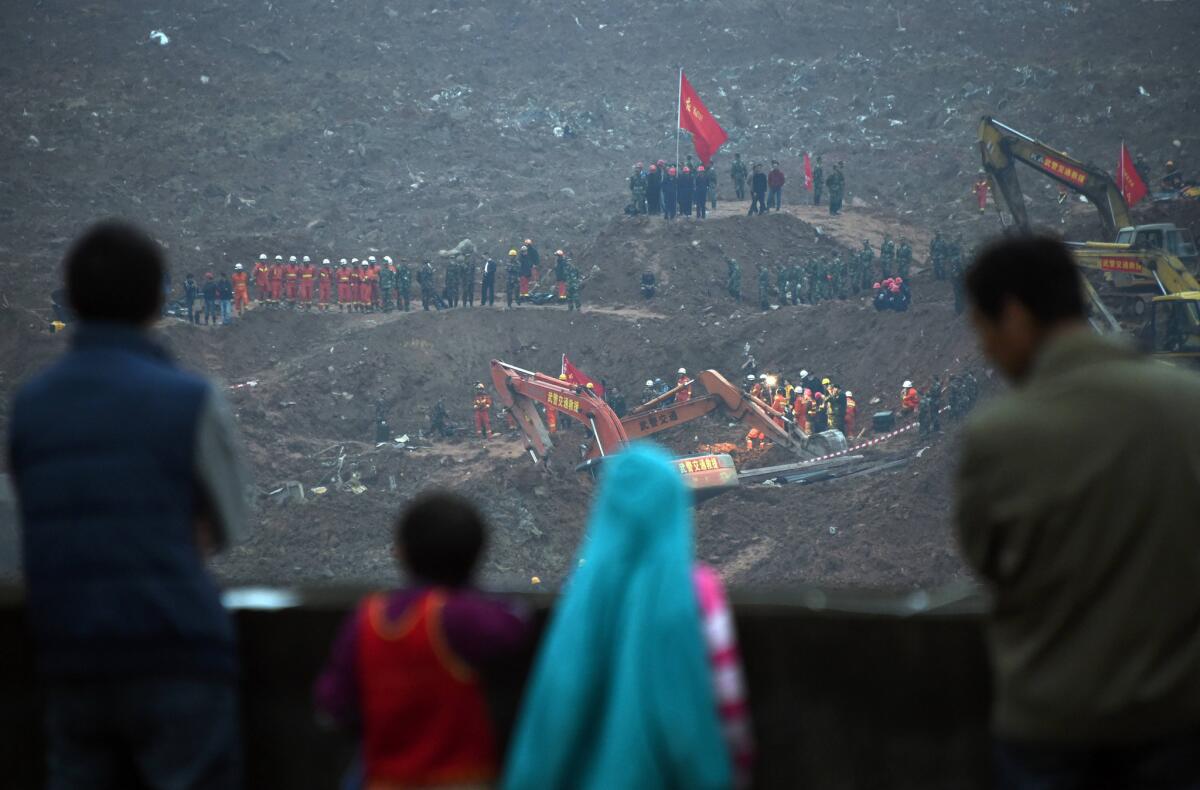
People watch as rescue workers look for survivors after a landslide hit an industrial park in Shenzhen in south China’s Guangdong province.
“Several people have been trapped, and the number of casualties cannot be estimated,” said an article on the website of the state-run People’s Daily.
Pictures posted online show wrecked tangles of low-slung, concrete buildings — both residential complexes and worker dorms — submerged in a tide of red dirt. Others show rescue authorities in orange jumpsuits and white helmets walking over the dirt with shovels. One video shows a tile-clad, three-story building collapsing in a cloud of smoke.
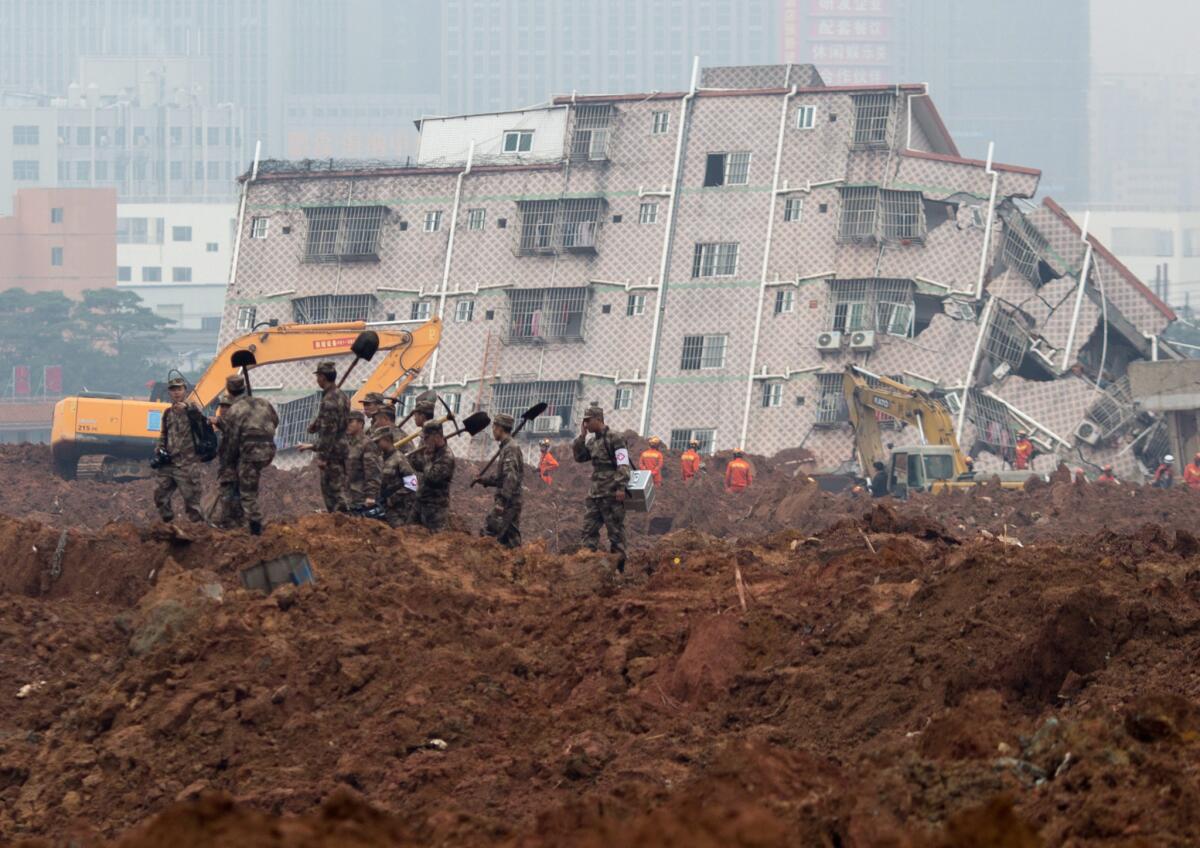
Chinese soldiers arrive with shovels as rescue work continues at factory buildings that were damaged in a landslide in Shenzhen in south China’s Guangdong province.
In November, a landslide in eastern China’s Zhejiang province killed nearly 40 people. In 2008, a mudslide in the northern province of Shanxi, triggered by the collapse of a mining waste reservoir, killed 277.
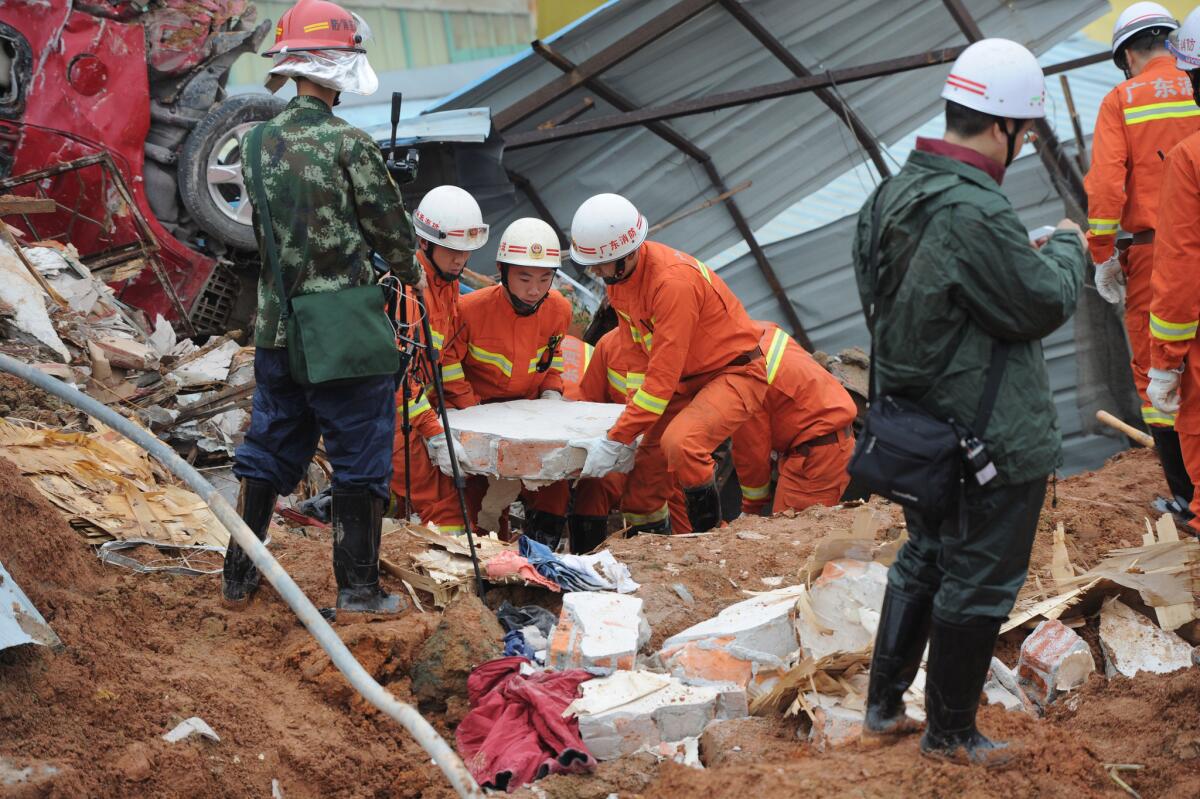
Rescue workers look for survivors after a landslide hit an industrial park in Shenzhen in south China’s Guangdong province.
China’s Ministry of Land and Resources wrote to its official microblog account that the landslide was caused by a man-made pile of dirt and construction waste, which was stacked too high at too steep a gradient. It said that mountains in the area “did not slide” during the disaster. Thirty-three buildings collapsed.
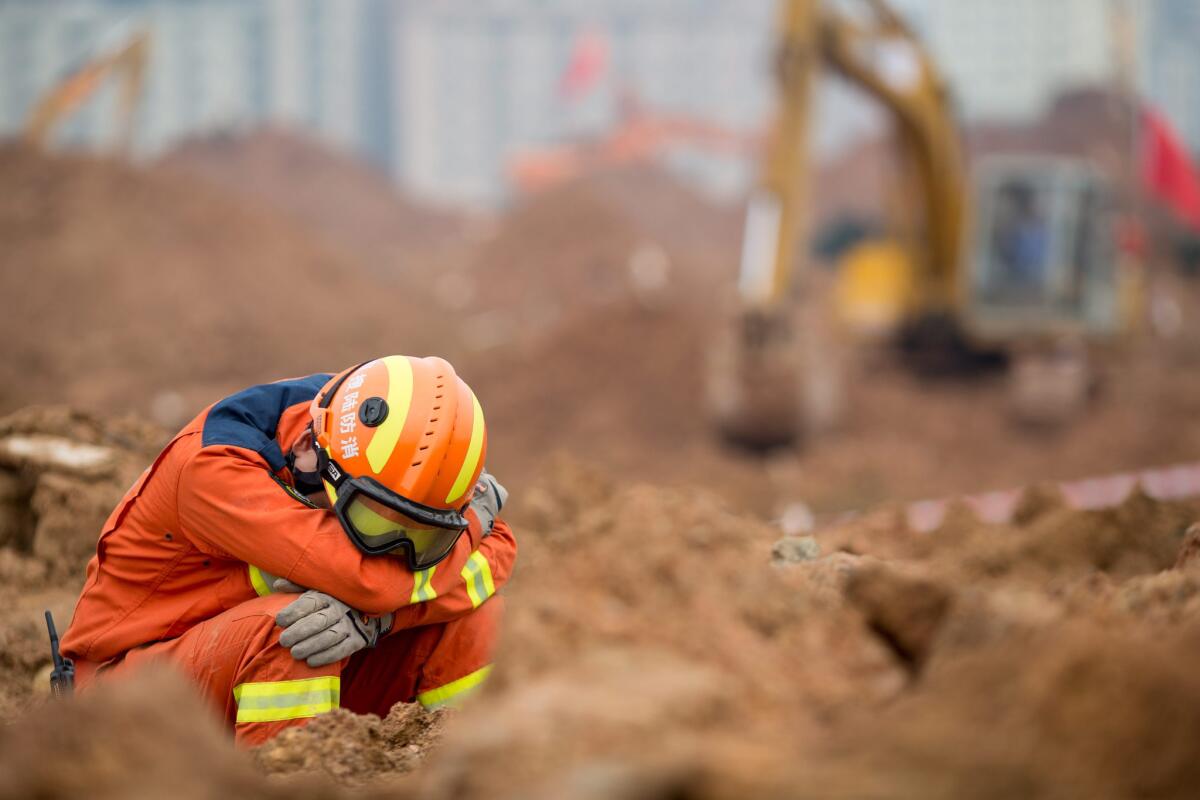
An exhausted rescuer takes a rest as he sits amid mud and rubble after a landslide in Shenzhen in south China’s Guangdong province. More than 91 people were reported missing.
ALSO:
Pentagon weighs cybercampaign against Islamic State
Pastor delivers fiery eulogy at memorial service for San Bernardino shooting victim
Female attackers are still few among Islamic extremist groups
More to Read
Sign up for Essential California
The most important California stories and recommendations in your inbox every morning.
You may occasionally receive promotional content from the Los Angeles Times.
